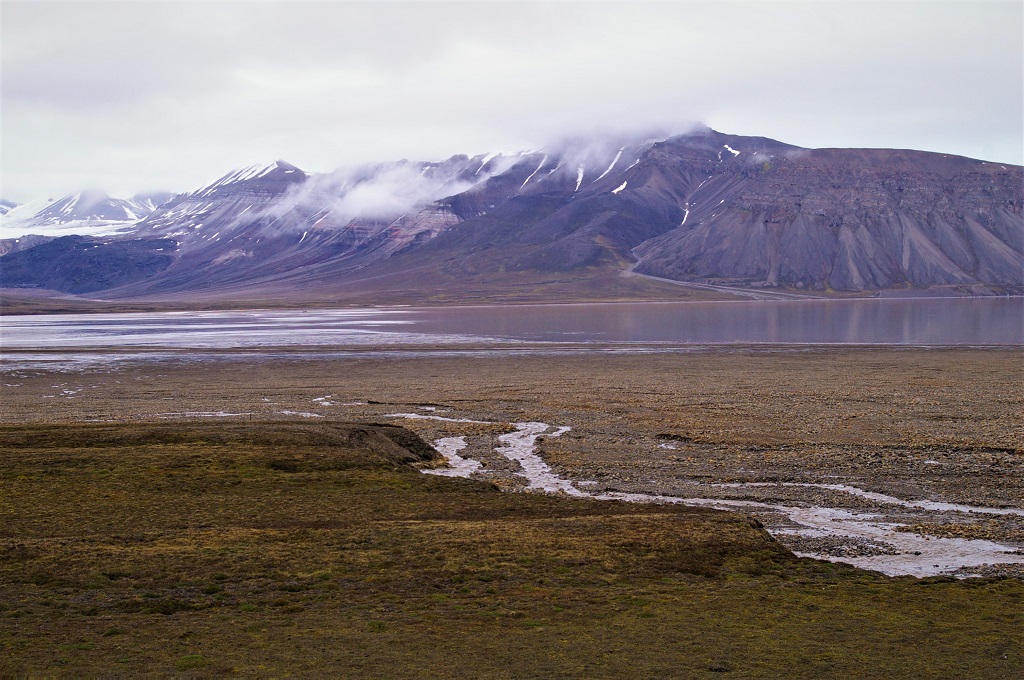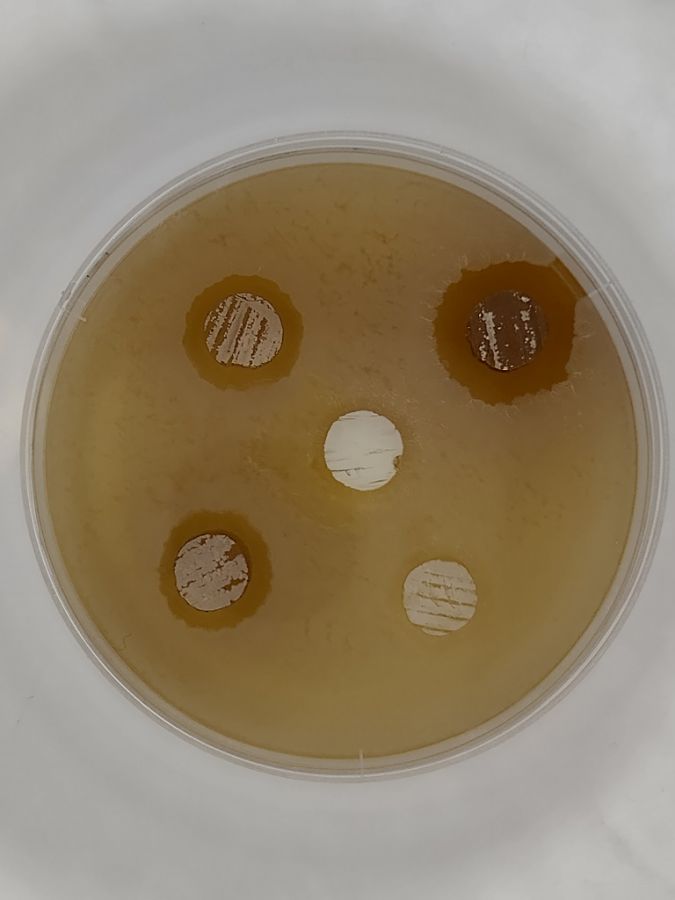Bio-what?
Bioprospecting, also known as biodiversity prospecting, refers to research activity aimed at identifying and obtaining chemical substances which can be found in nature and developed into commercially valuable products.
Such substances are then used, among others, in medicine, agriculture, bioremediation and the cosmetic industry. In the pharmaceutical industry, nearly one third of all small-molecule drugs approved by the United States Food and Drug Administration (FDA) in the years 1981–2014 were natural products or compounds derived from natural products. But while past research programmes focused mainly on terrestrial organisms, such as plants or fungi, these days the attention is increasingly on less studied organisms (such as invertebrates, myxobacteria and archaea) and ecosystems (including seas, oceans and polar regions). This is because there’s still a lot to learn in places like the Arctic and the Antarctic regarding biological diversity. Extreme conditions of the polar regions have led to the emergence of unique adaptations, which enable local organisms to thrive despite the cold and, at the same time, make them a valuable source of substances with great medical and industrial potential.
What is there to find in the polar regions?
The interest in polar regions as sites for bioprospecting activity is growing rapidly, with new projects and consortia created to obtain previously unknown substances. An example may be the Arni project, coordinated by the Finish Forest Research Institute (Metla), thanks to which some 600 strains of microorganisms were obtained from boreal and Arctic environments or – to be more specific – from soil, water, snow, plant and lichen samples collected in Lapland (northern Finland) and Svalbard. The aim of the project was to identify new directions in which such fields like environmental biotechnology, food biotechnology and the pharmaceutical industry should develop. With this in mind, the participating scientists were on the lookout for microorganisms and substances they produce (such as enzymes) which might prove useful in the above-mentioned fields. The project was a success, as the studied material did contain potentially useful microorganisms. These included, for example, Pseudomonas bacterial strains, which showed antimicrobial characteristics and thus might have potential for treating ailments like sore throats caused by streptococci. The material collected as part of the Armi project is also screened for anti-cancer drug candidates.

The Arctic (photo credit: Katarzyna Tołkacz)
Some of the work conducted as part of the Arni project was continued by the KAIRA initiative, supported by the mining industry. The mining sector uses large amounts of nitrogen-based explosives, which are a major source of ammonia and nitrate in mine water. Much of the water eventually mixes with the surface water, causing eutrophication. Possible effects of this phenomenon include algal blooms, which increase water turbidity and cause serious oxygen depletion, potentially fatal to marine organisms. The aim of the KAIRA project is, therefore, to develop new methods for effectively removing nitrogen from mine water at low temperatures, with the results likely to be widely applicable to the mining industry in the colder parts of the planet.
In Greenland, a study was undertaken to examine potential applications of wild genetic resources. Two companies – Arla Foods and Bioneer A/S – created sets of extremophilic microorganisms (or organisms tolerant to or even dependant on environmental extremes, such as very low or very high temperatures), which serve as a screening source of new enzyme candidates for use in medicine, biotechnology and food technology. Conducted research focuses, among others, on thermostable enzymes and cold active enzymes for use in various dairy processes.
Set up in Tromsø was the MabCent consortium between the Norwegian Research Council, the University of Tromsø and a few Norwegian biotechnology companies, with research activities planned for 8 years. Biological samples for these activities are collected from the waters along the northern Norwegian coast and north of Svalbard, and their aim is to develop new pharmaceutical products, including antibiotics, anti-cancer drugs, drugs for diabetes and obesity, and many others. So far, scientists from the MabCent team have spent the total of several months collecting research samples from over a thousand different sites. They’ve accumulated thousands of invertebrates and a few hundred species of algae. Research results indicate that invertebrates of the Arctic may prove useful in the search for new anti-cancer drugs, while fungi may become a source of new antibiotics. Some of the molecules isolated from marine sponges proved to have strong antioxidant qualities and are currently tested for applicability in cancer and diabetes treatment.
Found in Svalbard are numerous foreign research stations, five of which are Polish. The largest (and the only year-round) Polish research facility is the Polish Polar Station Hornsund, located at the shore of Isbjørnhamna. Research Stations are visited by scientists interested in polar research, regardless of where in the world they come from. Polish researchers study the biotechnological potential of microorganisms found in the soil and snow of Svalbard. The Korean Polar Research Institute, on the other hand, is busy with bioactive metabolites from Arctic organisms, as they may help to develop new treatments for leukaemia. Other research focuses, among others, on developing new antibiotics and new enzymes isolated from Arctic microorganisms.
It is worth noting that Polish scientists are engaged in bioprospecting near both poles. The Collection of Arctic and Antarctic Psychrophilic (cold-loving) Isolates, which is part of the Central Collection of Strains of the Institute of Biochemistry and Biophysics of the Polish Academy of Sciences (IBB PAS), contains nearly 3000 strains isolated from samples collected in various environments within the Arctic and the Antarctic. The person responsible for the collection is Jakub Grzesiak, PhD, from the Department of Antarctic Biology of IBB PAS. One of the focal points of Jakub Grzesiak’s work is studying the role of bacterial cell reserve materials, such as polihydroxy acids (PHA), in adaptations to stress conditions displayed by bacteria found in polar regions and evaluating the biotechnological potential of the microorganisms themselves and the PHA polymers they produce. The research may lead to a reduction in production costs of bioplastics and thus help them gain popularity among consumers.

Arctic actinobacteria (of the genera Streptomyces) surrounded by Bacillus cereus. Some of the former produce substances which hinder the growth of the latter and may thus be used as antibiotics. The actinobacteria were isolated from the tundra soil of Svalbard (photo credit: Jakub Grzesiak)
Research work is also in full swing at the Faculty of Biology of the University of Warsaw, where scientists have recently announced a potentially significant discovery. The substance they discovered belongs to the melanin category and was obtained from Antarctic bacterial strains collected on King George Island, where the Henryk Arctowski Polish Antarctic Station is located. Mass production of this natural compound might phase out synthetic ingredients of sun creams which contribute to the death of coral reefs. The Central Collection of Strains of IBB PAS may hide many such substances and is open to scientists willing to take on the necessary research work.
Meanwhile in Australia, researchers dealing with Antarctic krill have found out that digestive processes of these tiny marine organisms turn microplastics into nanoplastics, which may prove useful in the context of biochemical degradation of synthetic materials.
Bioprospecting activity in polar regions is going strong, offering much promise for the future, but what about the present? What substances discovered through bioprospecting are already in use? Examples are numerous, including an antifreeze glycoprotein, which circulates in the bloodstream of some Antarctic fish species and stops them from freezing. The substance has multiple commercial uses, such as deferring the expiry data of frozen food. The protein is also used in surgery in the process of tissue freezing. Another result of bioprospecting in the Antarctic is a substance which stimulates the process of wound healing by increasing the rate of cell growth and accelerating scar formation. The substance contains Antarticine NF 3 glycoproteins, produced by gram-negative becteria Pseudoalteromonas antarctica. Found on the market are also many cosmetics containing extracts from Antarctic algae.
Potential hazards
Bioprospecting, however, raises a number of ethical questions. Even outside polar regions, it remains one of the most controversial diplomatic issues of the last few decades, as it goes hand in hand with debates on sustainable development. So far, human activity in the Antarctic has been limited to scientific investigations. The Antarctic Treaty acknowledges the profound significance of international scientific cooperation for the common good of all mankind and, according to Article III of the Treaty, the contracting parties are committed to cooperate by exchanging information regarding plans for scientific programmes, received research results as well as scientific personnel between Antarctic expeditions.
And yet there seems to be a direct conflict between the free exchange of information which has so far been part and parcel of scientific investigations in polar regions and the need for trade secrets. Besides, it is still unclear how bioprospecting activities affect the environment, especially that they are far from uniform, ranging from mass collection of valuable organisms to collection of small samples, in which case the target substances, if there are any, are synthetized in laboratory conditions. Still, even small-scale sample collection may negatively affect sparse populations of organisms, because polar ecosystems are extremely delicate and take a long time to recover after they have been disturbed. This is why is it of utmost importance to settle the issue of bioprospecting in polar regions, exchange information and monitor the effects of human activity on the vulnerable ecosystems of the Arctic and the Antarctic. Otherwise bioprospecting may readily turn into biopiracy.
Cover photo: The Antarctic (photo credit: Katarzyna Tołkacz)
References:
Dawson, A. L. et al. (2018) “Turning Microplastics into Nanoplastics through Digestive Fragmentation by Antarctic Krill”, Nature Communications, 9(1), p. 1001. doi:10.1038/s41467-018-03465-9.
Leary, D. (2008) “Bi-polar Disorder? Is Bioprospecting an Emerging Issue for the Arctic as well as for Antarctica?”, Review of European Community & International Environmental Law, 17(1), pp. 41–55. doi:10.1111/j.1467-9388.2008.00584.x.
Leary, D. K. and Walton, D. W. H. (2010) “Science for Profit. What are the Ethical Implications of Bioprospecting in the Arctic and Antarctica?’, Ethics in Science and Environmental Politics, 10(1), pp. 1–4. doi:10.3354/esep00107.
Svenson, J. (2013) “MabCent: Arctic marine bioprospecting in Norway”, Phytochemistry Reviews, 12(3), pp. 567–578. doi:10.1007/s11101-012-9239-3.






